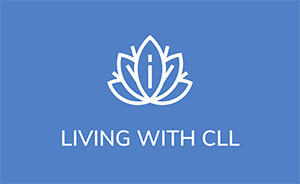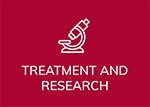
by Bob Levis – Patient
During 1999, I moved to Singapore with my wife and high school-aged son for what would become an eight-year overseas business assignment. We left our older son at college before moving. This was our fourth overseas assignment covering 22 years with postings in Brazil, Japan and Taiwan.
It was the practice of the company to conduct an annual physical for each of us, usually during our Summer home leave. My 2002 physical was uneventful, except for the bloodwork which showed an above-range white blood count (12,000). And so it began. A follow-up set of labs showed an even higher WBC (15,000) and positive for CD38. Then, a bone marrow biopsy (first of at least 15 over the years) confirmed that dreaded diagnosis – leukemia. My first thought was, “when am I going to die?” The most difficult thing at that point was telling my two sons that I had cancer.
My doctor in Singapore, Dr. Wen-Son Hsieh, was a blood cancer research scientist from Johns Hopkins on assignment at the Singapore University Hospital. He recommended that I schedule an appointment with Dr. Ian Flinn at Johns Hopkins in Baltimore, which I did the Summer of 2003. I also went to MD Anderson that Summer for an appointment with Dr. Michael Keating with my marrow sample. A FISH test at Johns Hopkins and marrow analysis at MDA confirmed 13q del CLL. While at MDA, a nurse found my first swollen lymph node – a pea-sized lump deep in my left clavicle. Both Drs. Flinn and Keating told me that my 13q del CLL was slow-progressing, not treatable at this stage and to go live my life while “watching & waiting.” We all know how that feels with worry thrown in there, too.
So I watched, waited and worried for the next four years. By 2007, my WBC had been doubling to ~250,000 along with ALC, expanding nodes and night sweats. I retired later that year (age 56) and moved back to the USA to prepare for treatment. During the Summer of 2008 with my WBC over 300,000, I underwent FCR therapy at Lehigh Valley Hospital in Pennsylvania, under the care of Dr. Lloyd Barron, who collaborated with Dr. Keating at MDA. I remember Dr. Keating saying that I waited too long for treatment and that I would suffer with the first FCR infusions due to the kill rate with such a high WBC. I did, but the treatment worked and put me in a complete remission for four years. I relapsed in 2012 and it was a shocker. I had converted to 17p del CLL. What now? More research.
With my CLL progressing more rapidly, Dr. Barron at Lehigh Valley Hospital recommended that I seek out CLL trials at major cancer treatment centers. I headed out to see Dr. John Byrd at Ohio State University. Ibrutinib was on the scene at the point with dosage and comparison trials. Dr. Byrd did not have any ibrutinib trials open at that time (Spring 2012), but wanted to put me in a trial using dinaciclib, so I scheduled that for Summer 2012, planning to move to Columbus with my wife, my #1 caregiver and CLL research companion. I flew back out to Columbus that Summer for my first scheduled infusion of dinaciclib, but my platelets were so depleted at that point (30,000) that Dr. Byrd halted the trial. He hospitalized me and put me on high doses of Solumedrol plus rituximab to try to recover my platelet count. I flew back to PA amped up in a swollen steroid frenzy. I completed the rituximab infusions at Penn Medicine in Philadelphia under the care of Dr. Steve Schuster, with whom I had also consulted. My platelets recovered to ~50,000.
By Fall of 2012, ibrutinib vs. ofatumumab randomized trials had opened at OSU and at Penn Medicine. I entered the trial at Penn Med to be closer to home, desperate to get on ibrutinib because I read that it was working well for CLL. Not to be. I was randomized to ofatumumab. I broke out in hives during my first of eight ofatumumab infusions, then developed tumor lysis syndrome and was hospitalized and given Dilaudid for the extreme pain in my legs. After being discharged from the hospital, I completed the remaining seven ofatumumab infusions, but it did nothing to abate my CLL. I remember running into CLL patients who were on the ibrutinib arm of that trial saying how well it was working. They asked me how I was doing on ofatumumab and I told them, “I am dying.” At that point, my CLL continued to progress. I was receiving platelet and hemoglobin infusions every several weeks. I felt exhausted and unable to catch my breath, even doing simple chores around the house. I contacted Pharmacyclics (ibrutinib manufacturer) to request a crossover to ibrutinib, but they refused. Reference my ASCO write-up on “Clinical Equipoise” in which I expressed my frustration with Pharmacyclics denying me a crossover to ibrutinib in order to save my life. I was becoming desperate, running out of time and options.
I learned about CAR T-cell therapy from reading an article in the New York Times about Dr. Carl June’s extraordinary results with this experimental treatment for CLL. Dr. Schuster introduced me to Dr. David Porter, who was opening a CAR T trial at Penn Med. I entered the trial during January 2013. I was patient #4. Following extensive pre-qualification tests (CT scans, MUGA scan, bone marrow biopsy), Penn harvested my T-cells using apheresis. It took about six weeks in the lab to genetically modify the T-cells. Prior to the modified T-cell infusion, I received three days of cytoreductive chemotherapy (fludarabine plus cyclophosphamide). I was infused with my “magic” CAR T cells on March 12, 2013. It took about 15 minutes to be infused with the milky white substance. And then my wife and I, now renting a place in Philadelphia near the hospital, waited for the expected cytokine response and severe flu-like reaction. At that point I wanted it to happen and said, “Bring it on!”
On day eight following the CA- T infusion, I was hospitalized at Penn Med with a fever of 101.4F. The next eight days were hell with a cytokine response causing fevers up to 104+F, chills, sweats, rapid heart rate, stomach and respiratory issues. On day nine, the fever broke and my platelet level jumped from ~40,000 to ~100,000. I was weak having lost 18 lbs., but relieved that the worst was over. The thirty or so palpable lymph nodes I had going into the trial were gone. Over the next few weeks my hemoglobin recovered from ~7.3 to normal range. My ALC dropped to below 1.0 since my CAR-T cells virtually wiped out my B-cells and the CLL with it. Blood labs and a bone marrow biopsy one month later showed no detectable CLL and my CAR T cells flourishing. I was in complete remission. Amazing! This was all celebrated in the news at the time. Google “Bob Levis Leukemia” for various reports by NBC Nightly News and others. The Levis family celebrated with a “survivor” trip to Hawaii.
Of the 15 patients who entered that experimental trial at Penn Medicine during 2013, three remain in complete remission while the others have moved on to ibrutinib, venetoclax and other maintenance therapies or have died. During 2016, I relapsed after three and a half years.
Hoping for another complete remission “homerun,” I entered a second CAR-T experimental trial at Penn Med last Fall 2017. This CAR T trial only involved CLL candidates on ibrutinib for at least six months, which I was. So here we go again with CTs, marrows, apheresis, genetics, etc. My CLL is still 17p del with a 13q del clone component, complex karyotype with TP53 del, STAG2 and SF3B1 mutations. My bloodwork is all in normal range. I do not have any swollen palpable lymph nodes nor symptoms, but there is still 40% CLL in my marrow.
This trial took place in October 2017 and involved three modified T-cell infusions over three days. It was preceded by three days of cytoreductive chemotherapy. I had a mild cytokine response with a low-grade fever on day 14 which did not require hospitalization. I kept waiting for a reaction to happen, but it did not. My third bone marrow biopsy as part of the trial during January 2018 showed that there was still 4.9% CLL in my marrow. It did not work this time, apparently. I remain in the trial while the Penn Med research team studies my blood and marrow samples, hoping they can learn from me to advance the science to benefit us all eventually.
My wife and I continue to do our research, in collaboration with my doctors to try to stay one step ahead of my CLL progression. We donate to the fine work that Brian Koffman and his CLL Society do to bond us and learn from each other about our CLL experience. We also support Dr. Carl June at Penn, Dr. John Byrd at OSU, the Leukemia & Lymphoma Society, the Alliance for Cancer Gene Therapy, always encouraging them to “solve the problem.”
Remember that lymph node that the nurse found deep in my left clavicle in 2003? I still feel for it nearly every day since it’s the one that comes back first when I relapse. It’s not there today.
Presently I am stable on ibrutinib, mostly fit at age 66, positive most of the time, planning the next family vacation and continuing to do my research to fight on. I wish the best for my fellow CLLers – as Brian says, “We are all in this together.”
Originally published in The CLL Tribune Q1 2018.

















